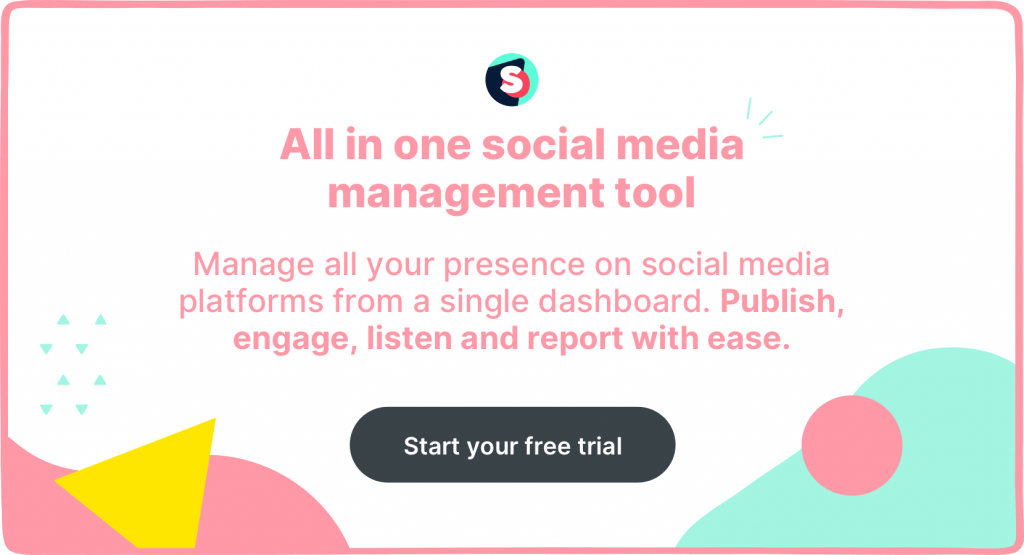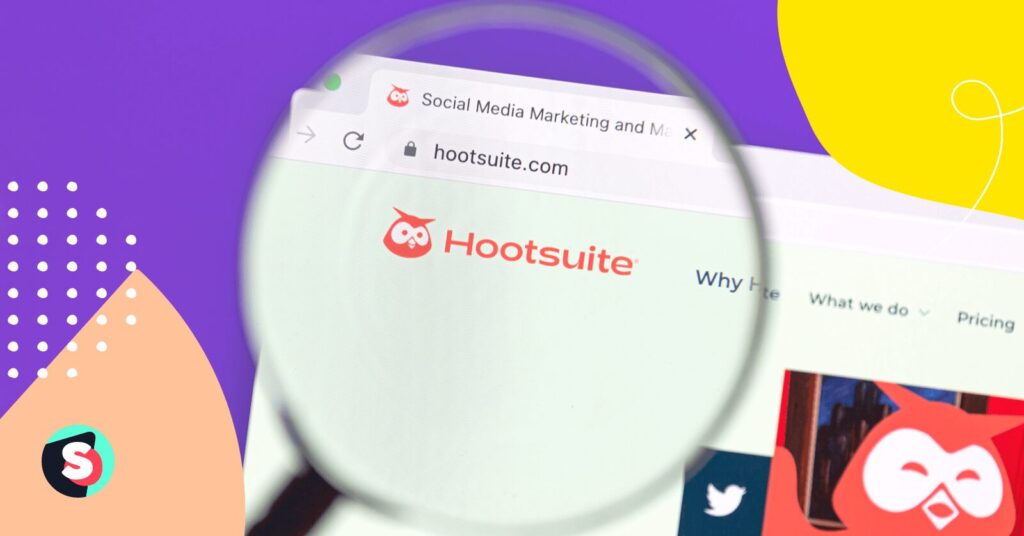Millions of people hearing about your brand for free is every brand’s dream. But before you rush to your marketing team and demand, “One viral content to go, please,” let’s dive deeper into the phenomenon. Stick with us to understand how viral marketing works and how to make the success of other brands repeatable and applicable to your marketing campaigns. Also, together we will find out if it’s still working in 2024.
What is viral marketing?
Let’s start with a quick definition of viral marketing:
Viral marketing, also known as word-of-mouth marketing, is when your immediate audience or users of your product/ service decide to voluntarily share, distribute or talk about your product, content, or brand.
To bring this definition home, think about how word of mouth works offline. Customers use a product/service and practically become unpaid salespeople for that brand. They don’t hesitate to share this newfound solution with their friends and family.
Now, the internet is the world’s marketplace, and content is the accepted currency. It’s how brands talk to their audience, inform, educate, or entertain them.
So what is viral content?
Viral content is a magic video, photo, tweet, etc., that instantly becomes popular on the internet and is shared by everyone. Viral marketing aims to use the same principle to promote a brand.
The term “going viral” depicts the speed at which such content spreads like wildfire from person to person on the Internet. The method of promotion relies heavily on people willingly distributing viral-worthy content. Social media users will spread the content like butter on a hot toast across the web on their own. So you can just sit and relax.
Unfortunately, viral marketing is not that simple. It can backfire if your content is not well thought out. But if you are lucky enough to go viral for all the right reasons, your brand will be organically seen by millions and gain international recognition.
Related Article: 6 Important Social Media Trends
Viral marketing definition
Now for an official viral marketing definition from Mirriam-Webster:
Marketing designed to disseminate information (as about a new product) very rapidly by making it likely to be passed from person to person, especially via electronic means.
We’re all clear on the viral meaning and how viral social media works, now let’s see what makes a brand go viral.
What do most viral marketing campaigns have in common?
All the past examples of social media viral marketing cases show a pattern of key elements for viral social media content. We’ll briefly go over each element to give you a better understanding:
1. Trendjacking: A lot of brands were able to add their two cents to something viral and get a moment of fame for themselves. A notable example is the cleaning product company Scrub Daddy. With over three million followers on TikTok, the brand has learned how to jump on popular trends to gain likes and views.
And how does it turn videos about dish sponges into hilarious, viral content? The key is a perfect combination of humor and working its products into viral trends. So when TikTok users started adding a dancing John Cena into the background of their videos with a brief explanation of why he’s dancing, Scrub Daddy followed suit.
It used the trend to show just how happy the brand is every time it gains a new customer.
Bonus read: Social media trending content ideas
📖 Worth checking: Mastering social media trends with Sociality.io Trends
2. Unique Brand Voice: Standing out in the crowd is tough. That’s why you need to craft an individual brand voice that sets you apart. Take the language app Duolingo.
Duolingo has become the King of chaotic viral content with a distinct tone of voice. Whether it’s dancing to a trending sound or hilarious reporting on pop culture news, Duo the Owl certainly has his own voice.
Take this recent TikTok video. Playing on the ever-trending topic of Taylor Swift’s love life, Duo weighs in with a shocking revelation. Of course, your brand’s voice doesn’t have to be quite so…unhinged. Just make it unique and instantly recognizable to your followers.
3. Utilizing the Social Landscape: Different platforms, audiences, and ways of interacting with content. Take the social media platform and its audience into account when developing your viral social media content.
The Washington Post is a great example. Heading to its TikTok page, you’d probably expect some hard-hitting news and a serious tone. Nope. It uses its TikTok to appeal to a different audience, posting funny skits about breaking news stories.
This strategy works so well because it allows the Washington Post to take full advantage of all the unique features that TikTok offers. The example below is the news publication’s response to Netflix’s recent crackdown on password sharing.
4. Correct Use of Influencers: Having a famous influencer in your campaign may help your content to go viral. Just don’t do it as Pepsi did with their Kendall Jenner ad back in 2017; choose wisely and make sure the influencer is aligned with your goals and message.
The password-managing app 1Password recently gave us a masterclass in picking the right influencer for the job. In a bid to make cybersecurity go viral, it teamed with the new co-owner of Wrexham Football Club, Ryan Reynolds,
Known for being one of the funniest men on the silver screen, Reynolds creates a hilarious ad campaign that is totally off-field. He gives his newly acquired football team a pep talk about online privacy but quickly has to pivot when he discovers they’re already on the ball (excuse the pun). Instead, he gives some solid skincare advice.
1Password expertly chose the best influencer possible to turn cybersecurity into a trending topic.
5. Hashtags: The use of correct hashtags or coming up with your hashtag can help to spread your message or invite people to engage with your content. And if you’re really savvy, you’ll create a whole new hashtag category like the footwear company Crocs.
Crocs went for gold with its brand-specific hashtags and original sounds. The standout is the TikTok hashtag #CrocTok which has over four million views.
Want to up your hashtag game? Check out our guides on using Facebook hashtags and debunking Instagram hashtag myths.
6 notable viral marketing campaigns examples in 2024
In this section, we’ve rounded up six spectacular examples of viral marketing to inspire, delight, and entertain you.
1. Kraft
It takes a lot of nerve for a brand to admit they forked up, and that’s exactly what Kraft did. After discovering that thirteen million Canadians eat macaroni and cheese with a spoon, Kraft (or KD) had some rethinking to do.
The macaroni brand adapted its marketing strategy to reflect the cutlery choice of 43% of its customers, creating a specific product for its spoon-eating Canadian audience.
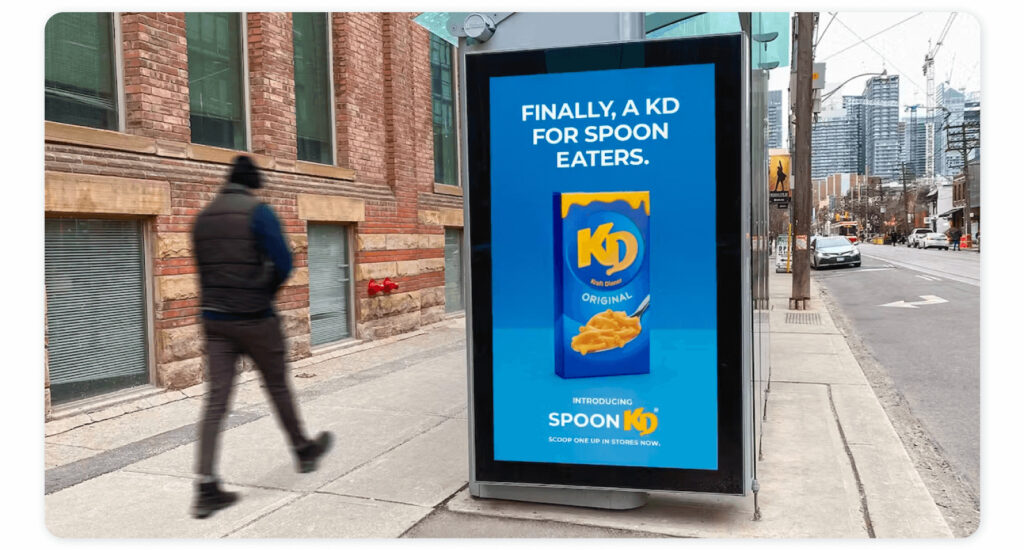
2. Heinz and Absolut
We didn’t see this collaboration coming. But then, that’s the beauty of it. Viral marketing campaigns that surprise your audience can be a great way to generate buzz. Of course, there still needs to be some way to tie the products together and create a cohesive campaign.
Sounds tough, right? Well, two household names recently showed us how it’s done. Jumping on Gigi Hadid’s viral TikTok recipe (#vodkapasta), the brands launched a limited-edition pasta sauce.
The campaign was a success for a number of reasons; jumping on an already popular trend and appealing to the TikTok demographic (who are big vodka fans).
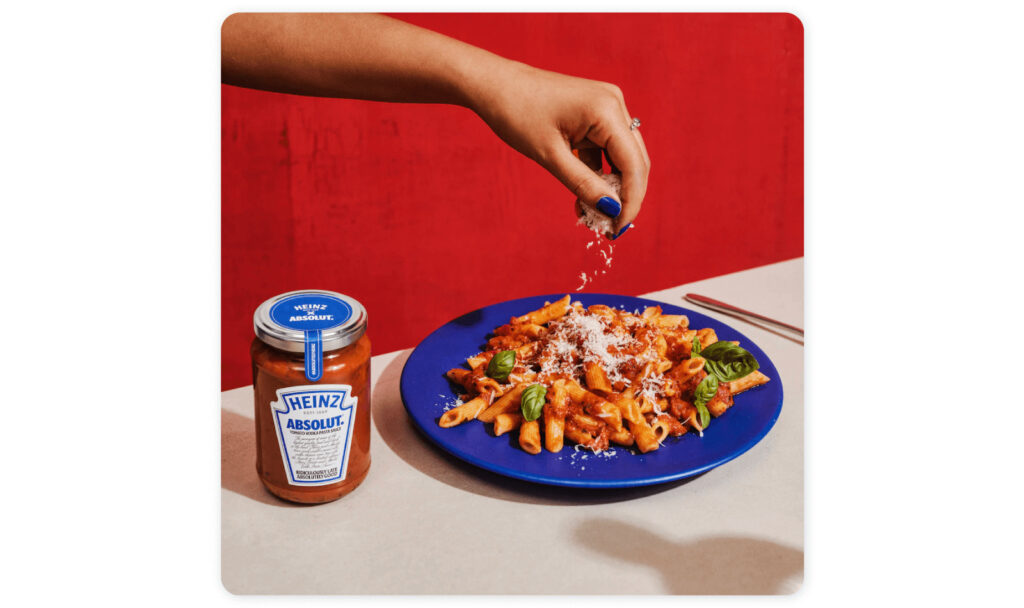
3. Dove
2024 is already shaping up to be all about authenticity. With performers like Lady Gaga and Rosalía performing bare-faced, the message is clear: it’s time to let go of damaging beauty standards.
One brand that has wholeheartedly embraced this message is Dove. Its recent #TurnYourBack campaign empowers users to turn their backs on damaging beauty filters, in particular TikTok’s Bold Glamor filter.
The campaign resonated with Dove’s target audience, who have strong social values and a deep interest in a brand’s social responsibility. What’s more, the personal message created a strong emotional connection that makes users more likely to share the campaign.
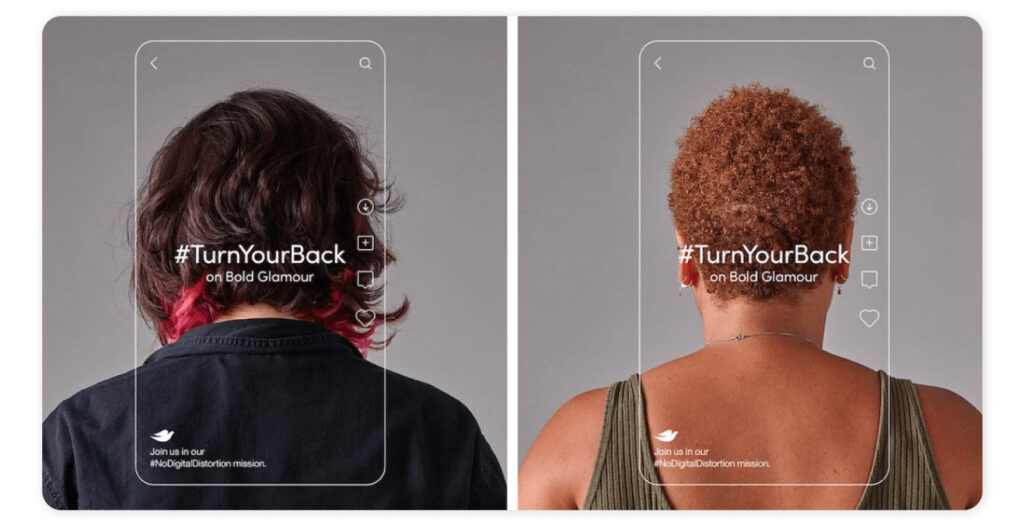
4. Uber Eats
One of the most interesting viral marketing examples of 2024 thus far comes from Uber Eats. Its Ramadan campaign resonated with Muslim consumers in a number of ways. From billboards updated daily to reflect the exact time of sundown (when the fast can be broken) to showcasing signature Iftar dishes, Uber Eats created something relevant and new. In the process, it aligns itself with its Muslim audience and shows it cares.
What’s more, Muslim consumers could schedule dinner delivery to arrive just at the right time.
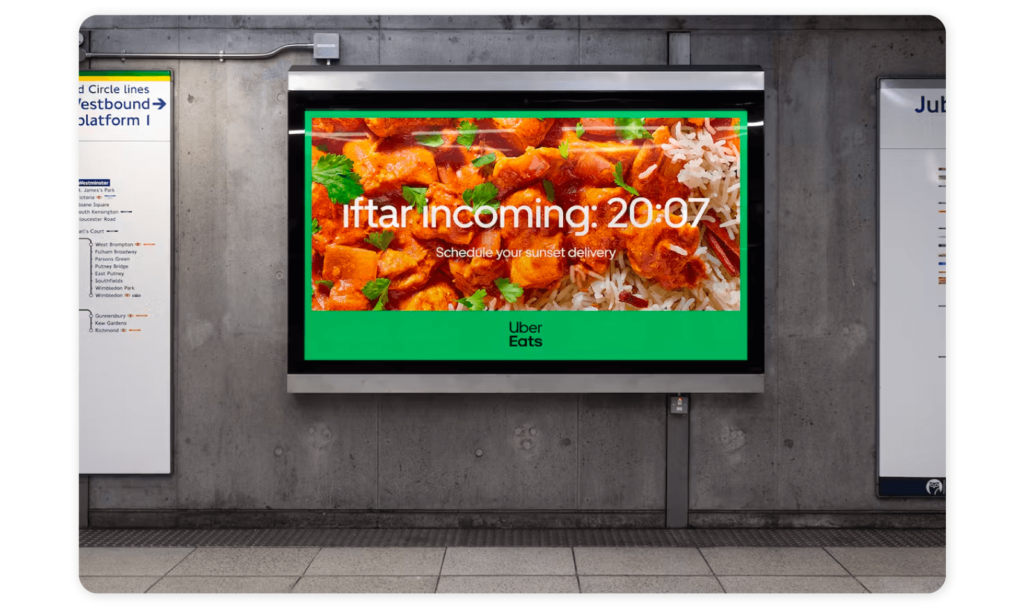
5. DDB New Zealand
The topic of gender equality in women’s sports has been a hotly debated one for quite a while now. However, gender biases still run deep, even infiltrating search engine results.
DDB New Zealand decided to address this in a recent campaign titled “Correct the Internet.” The ad expertly avoids pointing fingers and resonates with its target audience, female sports fans. It shines a light on some top female athletes who have long been overlooked in the sporting industry (and Google too).
With a clear and honorable mission, the agency is drawing the right type of attention to an important (and sensitive) topic.
6. Virgin Atlantic
Ok, so this campaign launched in 2022, but it’s still making waves in 2024. Virgin Atlantic’s “See the World Differently” campaign sets out to change the landscape of the travel industry. After several years at a standstill due to the global pandemic, Virgin Atlantic decided to create a more inclusive environment for both crew and passengers.
The ad empowers customers and crew to be unapologetically themselves, showcasing perhaps the most inclusive airline ad of all time. All to the soundtrack of Lady Blackbird singing “I am what I am.”
The bright side of viral marketing
Going viral on the internet not only provides amazing brand exposure but also can help to multiply your impressions and engagement on social media channels. Furthermore, it can build a positive image that ultimately will increase the bottom line.
Press coverage is sort of a package deal for viral marketing. The press loves to cover viral content. If you produce something that goes viral, publications won’t miss the chance to cover it. As a result, organic exposure will increase all by itself!
One of the recent cases of viral marketing comes from Gymshark.
Gymshark is a fast-growing brand that sells fitness apparel and accessories. They are one of the brands killing it on TikTok. The brand has hit the big time on TikTok thanks to a cleverly thought-out and multi-faceted approach.
To achieve this, Gymshark:
- Uses top-tier influencers in the fitness world to generate high-quality, viral content.
- Creates its own trends, like the #gymshark66 hashtag challenge, which encourages users to reach their fitness goals in sixty-six days, documenting their progress online
- Promotes user-generated content, building an active and supportive community
- Runs regular product giveaways and competitions
- Posts content consistently (more than forty posts per month) – content planning matters
Gymshark’s TikTok marketing strategy is a perfect blend of engaging, entertaining, and motivational user-generated content, so it’s little wonder they have a handful of content that qualifies as viral on TikTok. They understand what sort of content works for their TikTok audience, which has seen them grow to 4.6 million followers on TikTok.
✨ Bonus: How to get more followers on TikTok? Here are 10 tactics
Yes, virality can be unpredictable, but like Gymshark, you combine the necessary elements of viral marketing. It becomes a case of forcing your luck (or, in this case, virality).
Another notable example would be one from the viral marketing hall of fame—DollarShaveClub’s “Our Blades Are F***ing Great” ad. This one was a straight-up marketing video advertising their shaving blades, but they did so in a confident, non-traditional, and funny way that was relatable to thousands.
The ad garnered so much attention because it spoke directly to the consumers in a straightforward tone, addressed an issue with their solution, and managed to entertain them at the same time. It set a standard for many startups that tried to imitate this style for their ads.
The dark side of viral marketing
It’s not always rainbows and butterflies when it comes to viral marketing. Some brands have learned the hard way about going viral. It’s not always that the marketing team can foresee and prevent a campaign from going viral for all the wrong reasons. I’m sure the Peloton marketing team would agree.
The fitness equipment company released an ad for Christmas in 2019, which at first glance is your average Christmas ad, but ended up offending many women and instantly became infamous. The company ended up pulling off the ad from YouTube and apologizing for it.
As if that’s not bad enough, the company’s stocks dropped significantly after the marketing disaster. And as with every viral content, it also managed to generate quite the headlines. Take a look at some of the headlines below:
“Peloton Ad Is Criticized as Sexist and Dystopian” by The New York Times
“Peloton ad costs the company and shareholders $1.6 billion” by CBS News
Another case of viral marketing gone wrong was a tweet by Burger King on International Women’s Day (IWD) 2021.
As expected, IWD gets social media managers itching to celebrate women, but this particular gesture by Burger King was not well received by the public.
The reception the original tweet got was overwhelmingly negative, so much so that the brand was forced to delete it and apologize, following abusive comments in the thread.
The brand went ahead to do some damage control and tweeted this to explain their intention, but maybe such bad publicity could have been avoided.
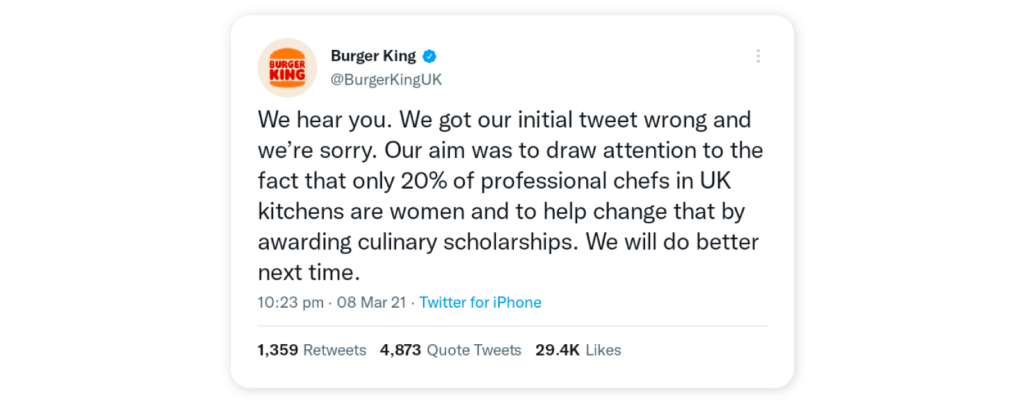
This should serve as a lesson to brands to be extra careful when addressing sensitive topics. Every detail needs to be thought out and planned out carefully.
Where to start with viral marketing in 2024
The internet is a strange place, and there’s no foolproof strategy for how to go viral. That said, these strategies are tried and tested, greatly improving your chances of gaining viral exposure.
1. Understand your audience
Yes, viral marketing aims at spreading your content beyond your immediate audience. However, you still have to pay attention to your audience because they are the first point of contact for your content. When you hit it off with your audience, the odds of virality are already in your favor.
That’s where a stellar content strategy really pays off.
Learn what kind of content triggers an engagement from your audience. You can also turn to your competitors to see how your target audience interacts with their content or use past campaigns you’ve run to understand better what resonates with them.
What time are they most active? What platform do they use the most? What tone of voice do they relate with more? All of these seemingly tiny details, if not put into consideration, can be your greatest undoing. Dollar Shave Club could only be that bold and blunt with their ad because they were sure their audience wouldn’t find it offensive.
You can choose to do all of these manually or turn to a social analytics tool like Sociality.io, which does all the groundwork and allows you to focus on the campaign itself.
With our social media listening, social reporting, and competitor analysis tool, you can get all these data points about your audience in minutes and use them to create better marketing campaigns.
1. Understand your audience with Sociality.io
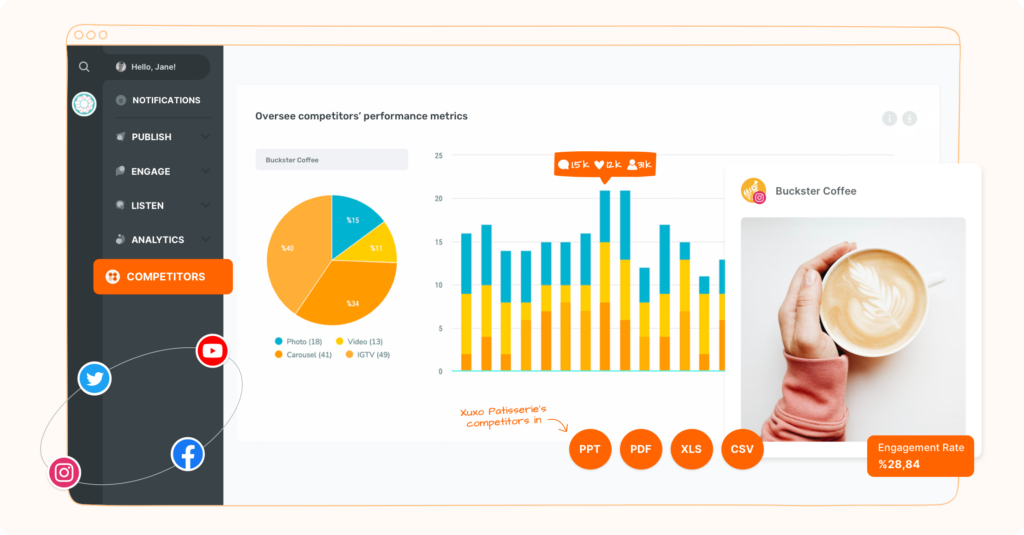
2. Tap into your audience’s emotions
When we talk about emotions in marketing, we don’t just mean campaigns or content that causes your audience to tear up. There are several other emotions, like happiness, trust, fear, and anger, that you can tap into.
Brands like Nike, Dove, and Coca-Cola understand this so well, and that is why most of their campaigns end up going viral. Let your campaigns carry a message that aligns with the values of your audience or speaks to a pain point or concern, and watch them turn into brand evangelists.
Coca-Cola’s “choose happiness” campaign focused on inspiring happiness amongst its audience by encouraging them to share their happy experiences and memories. On the other hand, a car insurance company can leverage the feeling of fear by showing their audience how much loss they have to bear if there is damage to their uninsured car.
Not sure if your campaigns are resonating with audiences? Try using a social media listening tool like Sociality.io to track key social media metrics.
3. Add some humor
Humour on the internet spreads like wildfire, and that’s why brands are starting to include memes in their content strategy. People will stop scrolling if they think your content will make them laugh, and if it does, they are immediately tapping on the share button and distributing it to their network. Don’t be scared to let loose a bit with your audience.
Of course, you have to be wary of the platform you are using. Twitter is much more accommodating of humor and sarcasm than a platform like LinkedIn but also less forgiving when your content falls on the other side of funny.
Jumping on funny viral hashtag trends is good place to start.
4. Involve your audience using user-generated content
If great content is what grants you access to the virality party, user-generated content (UGC) is the extroverted friend who makes sure you make new friends before leaving the party. UGC puts your campaigns on autopilot and allows you to take a back seat while your audience does the “viral spreading.” The best part is your audience won’t mind doing this, especially if your campaign is centered on a societal value or issue. That way, they believe they are partaking in something bigger than themselves.
Even if your campaign is solely to promote your product or service, your customers won’t mind being the face of your social media pages (except if you are marketing a bad product).
A final word on viral marketing in 2024
2024 is proving that people are tired of the fake corporate approach to consumers. The success of authentic campaigns like Dove’s “Turn Your Back” campaign showed the demand for honest and straightforward brand voices.
Examples from Kraft and Dove prove that viral marketing is still relevant. The Peloton ad and the burger king tweet, on the other hand, shows that brands are on thin ice, and the slightest carelessness in a campaign may break it and leave the brand in cold waters.
Viral marketing is always unpredictable, and the general cliche rule of marketing of being authentic is especially applicable. The cases above show how to successfully approach brand authenticity in an era where people expect transparency and real connection from the brands they use.


